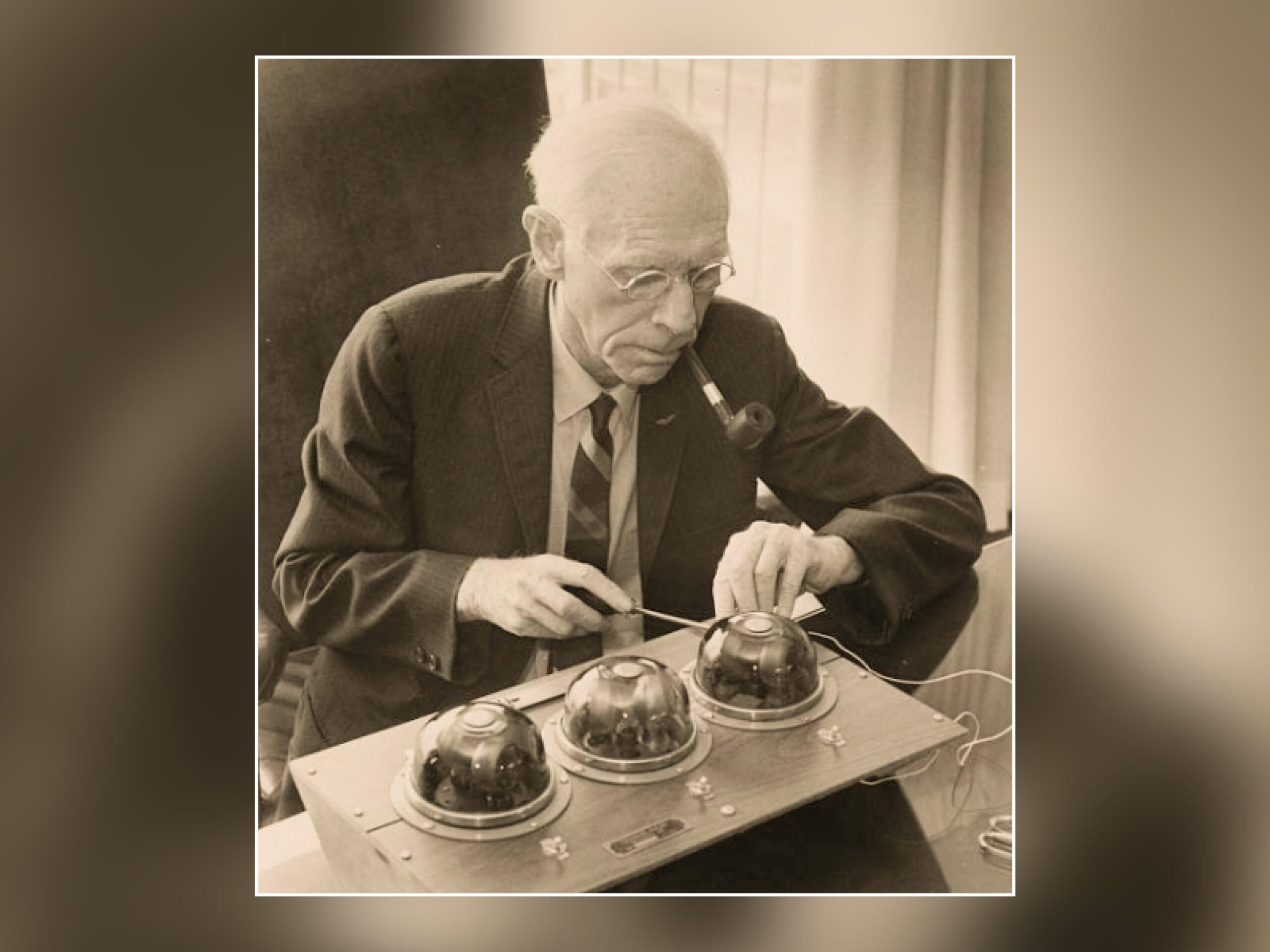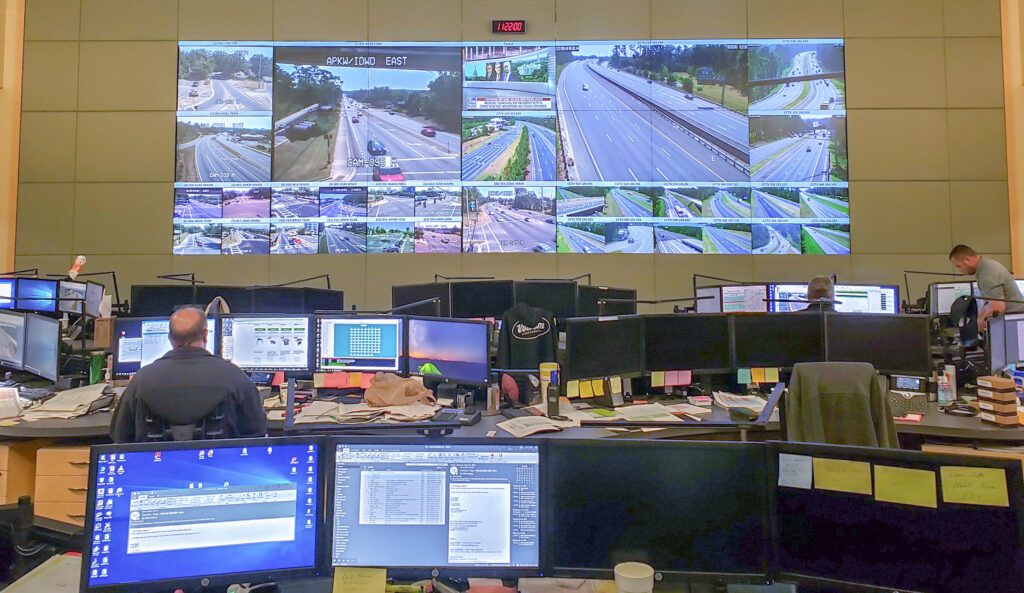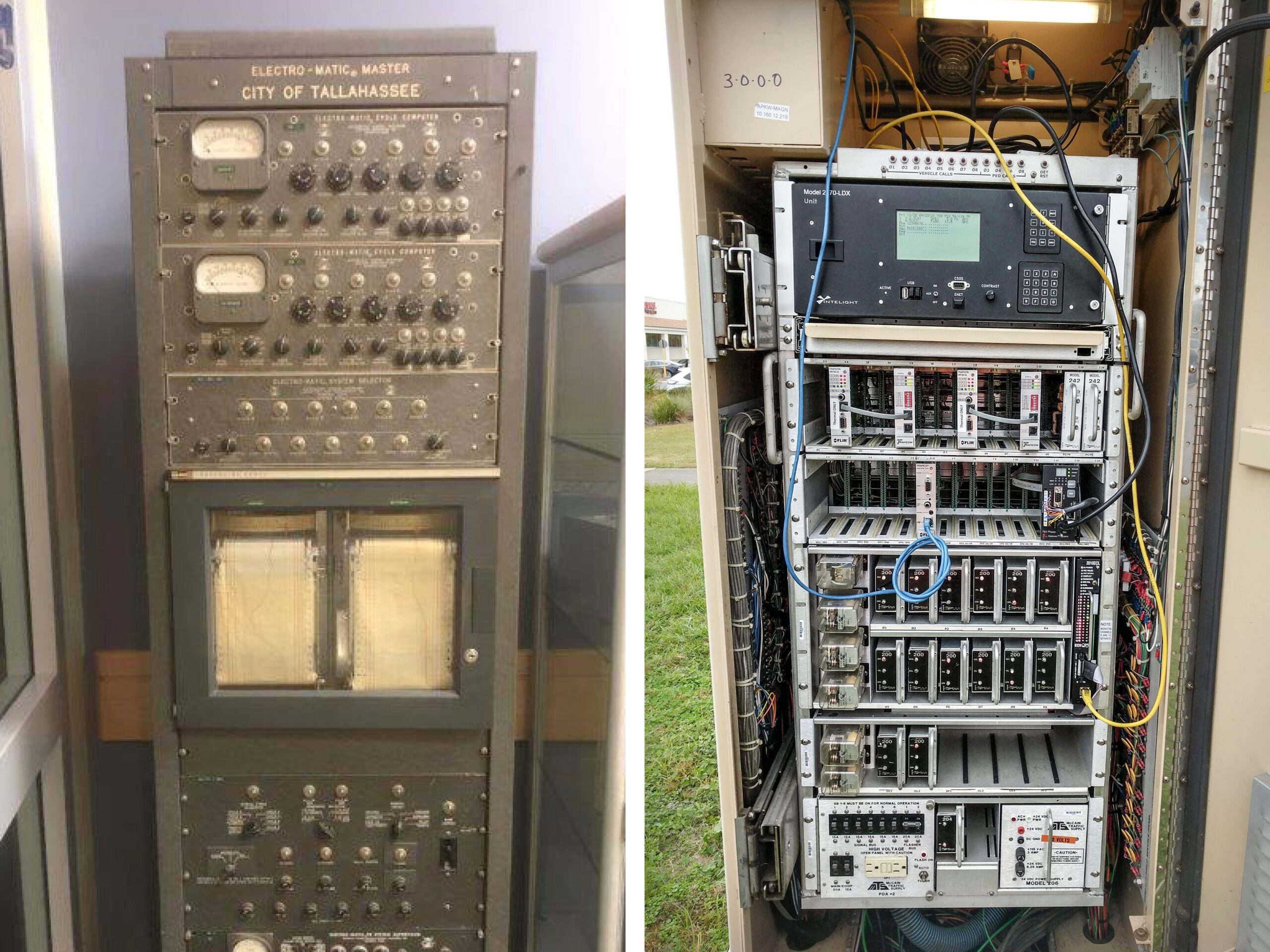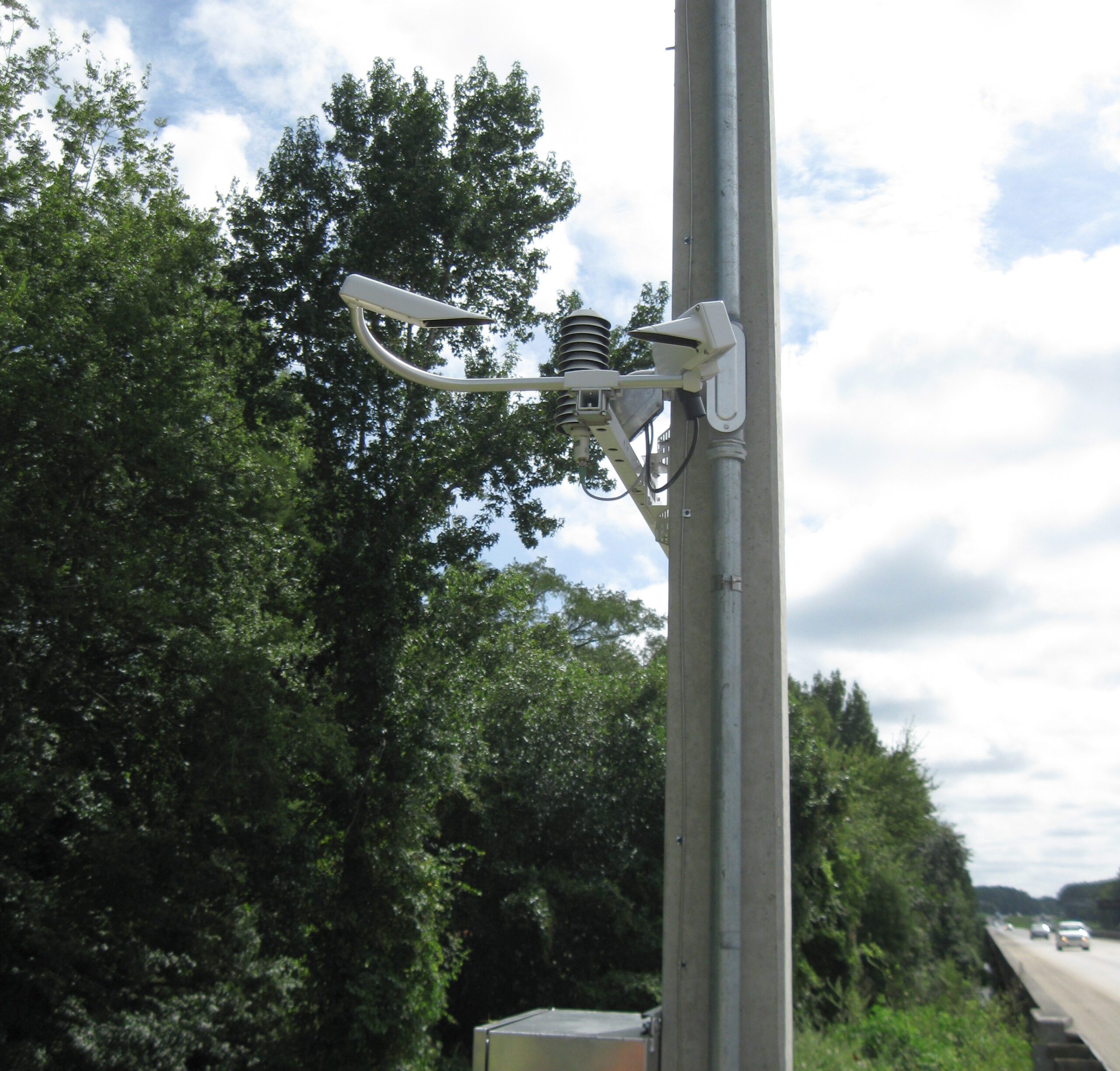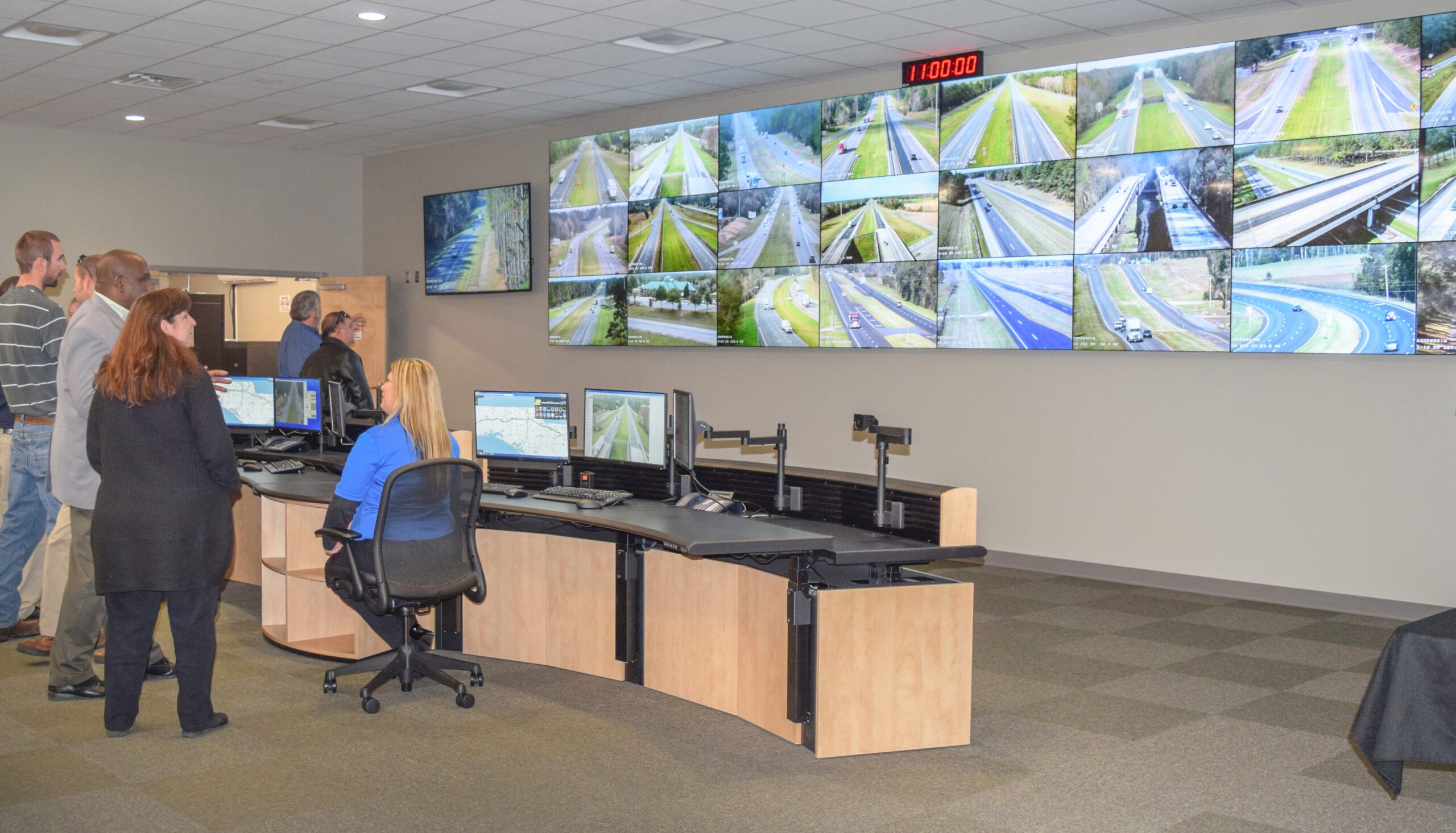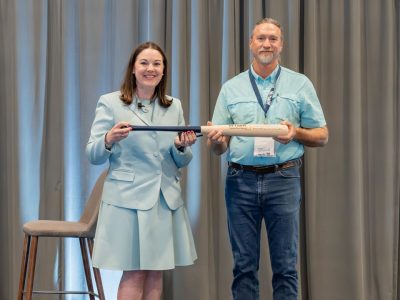How a Smart Traffic Control System Can Signal Success on the Roads
Inventor Charles Adler Jr. created a sound-actuated traffic signal in the 1920s designed to make a light change when a driver—who was sitting at a red light—honked the car’s horn.
Adler’s intention was to assist drivers on lightly traveled roads who needed to cross a major thoroughfare. He had grown tired of being stopped by the in-place timed signals when nobody was traveling along the thoroughfare.
His invention was mildly successful. It certainly had limitations.
He once told a reporter, according to The Baltimore Sun, “After it was installed, it blinked like a dime-store Christmas tree until we discovered that cows were activating it every time they mooed.”
Charles Adler Jr. works on a traffic signal in the later stages of his life.
The evolution of traffic signals—from early mechanical versions operated by a policeman sitting in a booth near the intersection, to timed lights and creations such as Adler’s—have advanced a great deal in the last century.
Gone are mechanical traffic controllers operating individual intersections out in the field. Today, computers at nearly every intersection, linked by fiber-optic networks, feed instantaneous data to state-of-the-art traffic management centers lined with video screens. Cameras give operators the lowdown on any traffic issues that arise.
One traffic management center, typically managed by a municipality, has the capability of monitoring 300 to 1,200 traffic signals.
A Genesis Halff-designed regional traffic management center, such as this one in Tallahassee, Florida, gathers large amounts of data so traffic system performance can be optimized.
Intelligent Transportation Systems and Why They Are Important to You
The U.S. Department of Transportation defines traffic signal coordination as “the ability to synchronize multiple intersections to enhance the operation of one or more directional movements in a system.” Examples include arterial streets, downtown networks and closely spaced intersections.
Traffic signal coordination is just one evolving technology under the Intelligent Transportation Systems (ITS) umbrella.
Why is it so important? There are more vehicles on our streets than ever before. By knowing where problems are located, adjustments can be made in real time to ease congestion and reduce travel times.
Sometimes it doesn’t seem anything is being done to alleviate a difficult situation because there are so many cars. However, technology is helping to optimize the way traffic is flowing—creating more capacity on the existing amount of pavement or concrete.
One simple example of this would result from a broken-down car in the line of traffic. With one of two lanes now blocked, an adjustment—using only a couple of keystrokes—is made to the traffic signal at the next intersection, allowing additional green time so more vehicles can pass through. The decision-making is immediate and performed at the controller level.
Electro-mechanical computers (left) operated individual intersections in the past. Today’s modern computers (right) use fiber-optic connections to relay instantaneous data to a traffic management center.
Emissions, noise levels and fuel consumption can be reduced by optimizing signal timing and coordinating traffic flow. It allows emergency vehicles, buses and commercial vehicles to save time. Most important, the number of severe collisions on city streets can be reduced by producing smoother traffic flow and fewer stops.
Other situations at an intersection that may alert traffic management center personnel of a problem include lights that go into flash mode for power outages or a stuck pedestrian button. The computers, through fiber-optic connections, are programmed to communicate when something is wrong.
Even when signal timing has been optimized for a specific number of vehicles that pass through a corridor, it must be adjusted periodically. A new site development—even a new store—can alter traffic behavior throughout the entire corridor.
Camera systems provide the “eyes in the sky” for traffic management center operators.
Other Benefits of Signal Control Technology
Camera systems, traffic control systems and traffic management centers truly complement one another.
-
They enable traffic to be monitored and problems to be identified.
-
They are important tools that help emergency response personnel and law enforcement engage when an incident occurs.
-
They help highway personnel respond to stranded drivers or disabled vehicles.
-
They measure and record travel times throughout a corridor using Bluetooth devices, microwave detection systems and license plate readers.
-
Their functionality allows for reducing congestion.
Plus, connected vehicle projects are being installed across the country. These units will allow signal controllers to communicate with drivers about the status of a signal or other important information.
Adaptive signal control technology is making its way into the marketplace as well. Whereas conventional systems use pre-programmed timing schedules, adaptive signal controls use data gathered from changing traffic patterns on the street to change automatically and give more green time to a particular movement. Fewer delays, naturally, improve traffic flows.
And really, that’s all Charles Adler wanted—to get to the other side in a timely fashion.
Halff’s ITS engineers specialize in traffic studies, signal timing and coordination, traffic modeling, intersection design, controller timing, fiber-optic networks, camera system design and traffic management center design. Write to Info-Transportation@Halff.com for more information.

